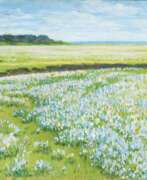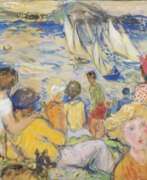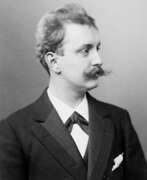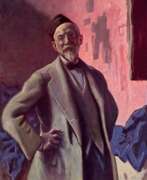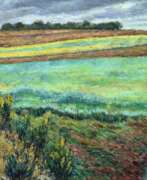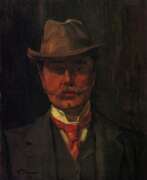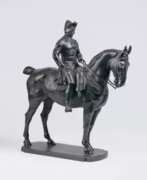Realism Berlin Secession
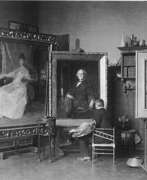

Reinhold Ludwig Richard Lepsius was a German painter of the late nineteenth and early twentieth centuries. He is known as a painter, graphic artist, portraitist, representative of the Berlin Secession and German Impressionism.
Lepsius was one of the first artists who used photography to create portraits. The master became famous for his portraits of famous personalities such as archaeologist Ernst Curtius, philosopher Wilhelm Dilthey and poet Stefan Gheorghe. His membership in the German Artists Association strengthened his position on the art scene. Unfortunately, many of his works were lost during World War II.
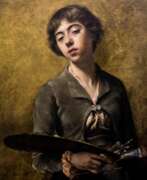

Sabine Lepsius was a German painter of the late nineteenth and first half of the twentieth centuries. She is known as a painter, portraitist, representative of realism.
Sabine Lepsius was the wife of portrait painter Reingold Lepsius and together with him was a popular artist of his time. Her salon in Berlin was a famous meeting place for many artists and writers. She was also one of the founders of the Berlin Secession and exhibited with it until 1913.
Only a small part of Lepsius' oeuvre has survived: most of the 280 portraits she created depicting members of the Jewish community were lost or destroyed during World War II.


Hans Looschen was a German painter and illustrator.
Looschen received his professional education at the Prussian Academy of Fine Arts, 1893 regularly participated in the Great Berlin Art Exhibition and was its president on several occasions. From 1899 to 1901 he was represented in the Berlin Secession and was also a member of the Berlin Artists' Association.
Hans Looschen painted landscapes and portraits, still lifes and historical paintings in the style of 19th century realism. He also worked as an illustrator. During his lifetime, Loschen received many awards and prizes for his work.


Felix Meseck was a German painter, illustrator and graphic artist.
He studied at the Academies of Fine Arts in Berlin and Königsberg, studying painting with Ludwig Dettmann and etching with Heinrich Wolf. In 1926 he was appointed professor at the Weimar Academy. After World War I, when he served at the front as a private soldier, Meseck took up engraving with success. He was a member of the Berlin Secession, the Association of German Artists, collaborated with leading magazines such as Ganymede, and illustrated works by Shakespeare, Goethe, Novalis, and Brentano.
Unfortunately, most of Felix Meseck's work was destroyed in 1945 during World War II. A frequent motif in Mezek's works is trees, and his techniques were pen drawings and dry needle etchings.


George Mosson was a German painter of the late nineteenth and first third of the twentieth centuries of French origin. He is known as a painter, famous for his floral still lifes, landscapes and portraits.
George Mosson studied at the Academy of Fine Arts in Berlin and the Weimar Art School. In 1892 he co-founded the artists' association Vereinigung der XI (Association of the Eleven), and in 1898 he became a founding member of the Berlin Secession, which was created in opposition to academic art. The master later joined the Free Secession and was a member of the German Artists' Union. Mosson actively exhibited his work in Berlin and left a significant artistic legacy.


Richard Scheibe was a German artist primarily remembered as a sculptor. He trained as a painter, and taught himself to sculpt beginning in 1906. From 1925-1933 he taught at the Städelsches Kunstinstitut in Frankfurt am Main. He was dismissed from teaching when the Nazis seized power but was reinstated in 1934. He received various recognitions during the Third Reich, including the Goethe-Medaille für Kunst und Wissenschaft and placement on the Gottbegnadeten list. After World War II he continued to sculpt, including a figurative piece for the Memorial to the German Resistance. His work was also part of the sculpture event in the art competition at the 1928 Summer Olympics.


Leo von König was a German painter of the first half of the twentieth century. He is known as a portrait painter, teacher and one of the leading representatives of the Berlin Secession artists' movement.
Von König early in his career was fascinated by Impressionism, influenced by his study of painting in Paris and Berlin. He created portraits of famous personalities in Germany, including cultural figures as well as one of the Nazi leader Goebbels. Von König also worked as a teacher and ran a workshop class at the school of the Berlin Museum of Applied Arts. His works are preserved in the art museums of Braunschweig and Düsseldorf.
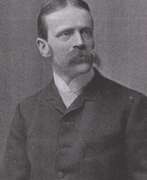

Fritz von Uhde was a German painter of the last third of the 19th and early 20th centuries. He is known as a religious and genre painter, who combined realism and impressionism in his work.
Von Uhde, creating genre and religious paintings, sought to connect the New Testament with modernity, depicting as characters representatives of the lower strata of the population. He is considered the forerunner of modern church art. Critics and the public often dismissed his work for being "vulgar," but admirers compared his style to Rembrandt for its naturalness and connection to life.


Emil Rudolf Weiss was a German painter, typographer, graphic designer and poet.
Weiss studied at the Karlsruhe Academy of Fine Arts, then at the Julian Academy, and published his first collection of poetry. In 1895, he began his work in book arts by designing typefaces for the art magazine Pan. He also worked on the design and illustration of various publications. In 1907, he joined the Berlin Secession.
Weiss's first graphic works were influenced by Symbolism and Jugendstil, as well as the works of Edvard Munch and Felix Vallotton. From 1910, Weiss increasingly defined himself as a painter, creating still lifes, portraits, landscapes and genre scenes. Weiss developed many typefaces and coin designs. In 1907-33 Weiss taught at the Kunstgewerbeschule in Berlin, which from 1924 was merged with the State Higher School of Art. From the 1920s, Emil Rudolf Weiss was the representative of the Flechtheim Gallery.
The Nazi regime subjected Emil Weiss to persecution, banning his paintings as well as teaching, and he died of a heart attack in 1942.
